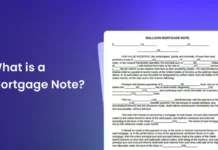
Let’s be honest with each other. Saving money is not the easiest thing in the world. It’s hard, and it requires sacrifice and discipline. However, saving money is worth all the trouble if you want to buy your first home.
Fortunately, you can use numerous strategies to lower your monthly expenses and save more towards a downpayment for your first home without skimping on life’s little pleasures.
Here are four simple but effective ideas to lower your monthly expenses drastically and save more.
1. It always starts with a budget: create a minimal one and stick to it—no matter how much you have to sacrifice
The first step to reducing your expenditure is to create a budget.
There’re many ways to budget, but an excellent guideline is to keep your expenses under 30% of your income and only spend what you make. If you have debt, pay off as much of it as possible so that interest doesn’t eat into your income or savings or cause other financial challenges.
After creating a budget, stick to it, even if it means sacrificing some things, like skipping certain luxuries and wants or going without certain things—like cable TV.
You’ll realize that once you start getting used to living a minimal lifestyle, saving money, and seeing yourself get closer to owning your first home, these small changes will feel more worth it and natural, so much so that you’ll want to find ways to save more.
2. Do a monthly spending audit
One of the best ways to lower and handle your monthly spending is by doing a monthly budget audit.
Here’s how to do one in two easy steps:
Step 1: Figure out where your money goes each month
At the end of each month, whip out your financial records and look at them carefully, including bank statements and paid invoices (for any bills), credit card statements (if applicable), receipts for purchases made in cash or online, and anything else that might be relevant.
Remember that even if you don’t have exact figures for one specific expense category—such as food or clothing—you can get some general idea by looking at how much money comes in versus how much goes out each period over an entire year.
Step 2: Check for discrepancies, gaps, and money pits
Check for discrepancies between income and expenses when compared against each other over time.
Doing this will help you determine if some non-important aspects of your life are using up too much money that you can direct toward saving for your first home.
3. Consolidate your debt
If you have multiple debts, you can reduce interest costs by consolidating them into one lower with lower monthly payments.
If you have loans with high-interest rates, consolidating can also help you save money on monthly payments and lower the total amount of principal you need to pay off to retire your debt.
Loan consolidation is not without its risks, though. For example:
- Consolidation loans and other types of financing for home ownership (i.e., conventional mortgages) don’t meet your needs.
- In some cases, if a lender does not approve your request for consolidation, it could mean they will only lend money once another lender offers them an opportunity.
4. Use a home affordability calculator to see what a difference your monthly spending makes
Now that you have a better idea of how much your monthly spending will be, it is time to see what a difference it makes. You can do this using a home affordability calculator.
To use such calculators, you only need to enter your relevant information, including your monthly income and expenses. Next, click “Calculate” to see your monthly housing budget if you were buying without help and how much extra money you would need to save each month until you have what you need to buy your first home or for a downpayment.
Another way to determine how much money you need for down payments, closing costs, and other costs associated with buying a house is by analyzing your home buying financial plan.
After gathering and analyzing this information, you can do several things, including determining your debt-to-income ratio, closing costs, and which aspects of your monthly expenditure you need to work on to ensure you can comfortably afford your first home.
Conclusion
Changing your spending habits and drastically reducing your monthly expenditure to save more toward buying your first home takes work, but it is possible if you become a mindful spender.
Must Read: The Ultimate Guide for Millennials: Buying Your First Home





























































